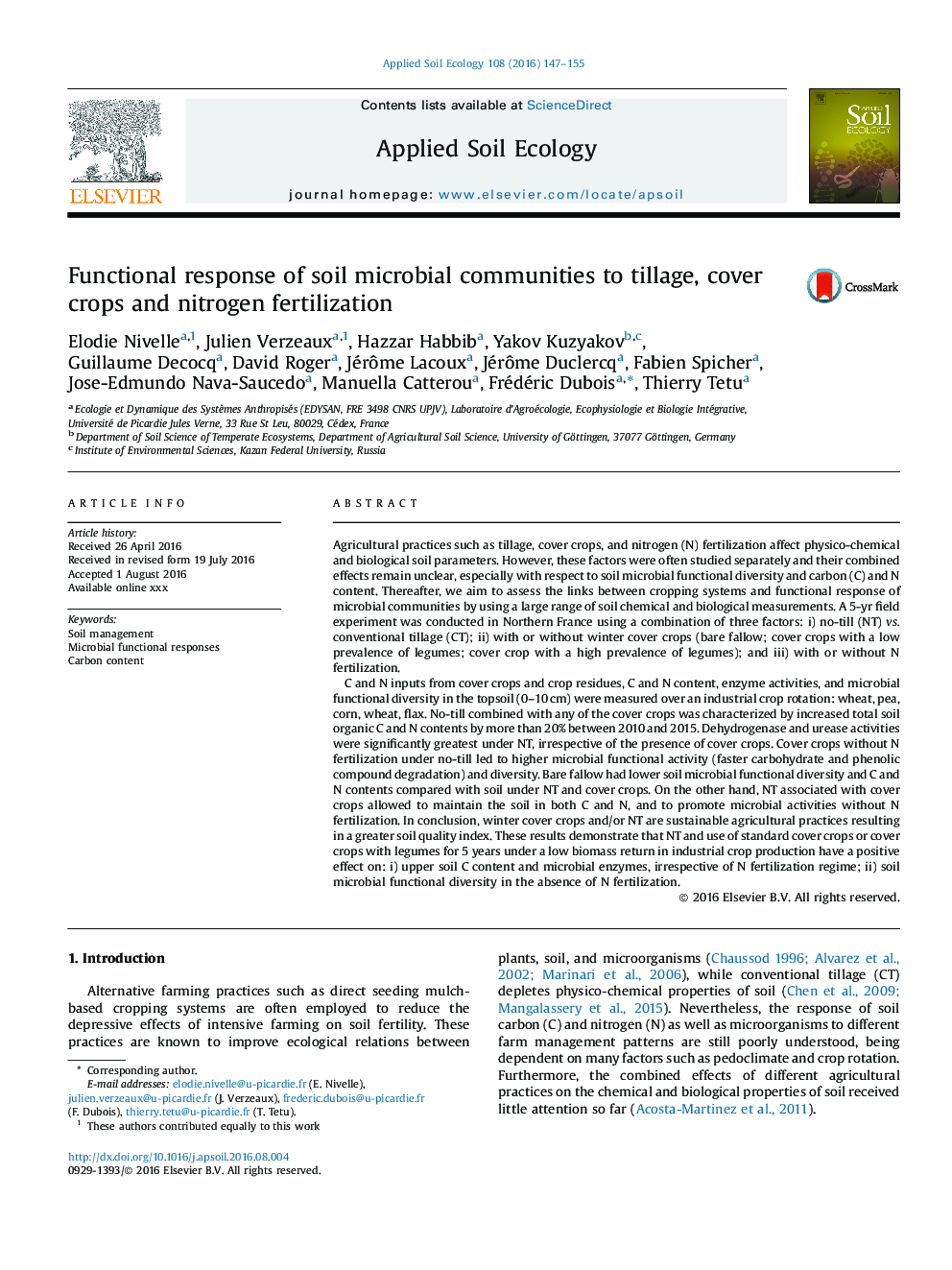| Article ID | Journal | Published Year | Pages | File Type |
|---|---|---|---|---|
| 6297454 | Applied Soil Ecology | 2016 | 9 Pages |
Abstract
C and N inputs from cover crops and crop residues, C and N content, enzyme activities, and microbial functional diversity in the topsoil (0-10Â cm) were measured over an industrial crop rotation: wheat, pea, corn, wheat, flax. No-till combined with any of the cover crops was characterized by increased total soil organic C and N contents by more than 20% between 2010 and 2015. Dehydrogenase and urease activities were significantly greatest under NT, irrespective of the presence of cover crops. Cover crops without N fertilization under no-till led to higher microbial functional activity (faster carbohydrate and phenolic compound degradation) and diversity. Bare fallow had lower soil microbial functional diversity and C and N contents compared with soil under NT and cover crops. On the other hand, NT associated with cover crops allowed to maintain the soil in both C and N, and to promote microbial activities without N fertilization. In conclusion, winter cover crops and/or NT are sustainable agricultural practices resulting in a greater soil quality index. These results demonstrate that NT and use of standard cover crops or cover crops with legumes for 5 years under a low biomass return in industrial crop production have a positive effect on: i) upper soil C content and microbial enzymes, irrespective of N fertilization regime; ii) soil microbial functional diversity in the absence of N fertilization.
Keywords
Related Topics
Life Sciences
Agricultural and Biological Sciences
Ecology, Evolution, Behavior and Systematics
Authors
Elodie Nivelle, Julien Verzeaux, Hazzar Habbib, Yakov Kuzyakov, Guillaume Decocq, David Roger, Jérôme Lacoux, Jérôme Duclercq, Fabien Spicher, Jose-Edmundo Nava-Saucedo, Manuella Catterou, Frédéric Dubois, Thierry Tetu,
